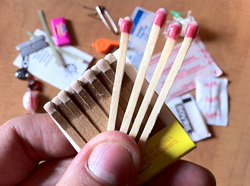
After any major disaster or minor disaster you might wish you had on hand a little 72 hour kit. No one knows when a major disaster happens or a minor will happen. The best insurance is to be prepared. Here are some steps in creating your own 72 hour kit and Go-Bag if a disaster happens.
72 Hour KitYour basic emergency kit should include:
| Go-BagA component of your disaster kit is your Go-bag. Put the following items together in a backpack or another easy to carry container in case you must evacuate quickly. Prepare one Go-bag for each family member and make sure each has an I.D. tag. You may not be at home when an emergency strikes so keep some additional supplies in your car and at work, considering what you would need for your immediate safety.
|

 RSS Feed
RSS Feed
